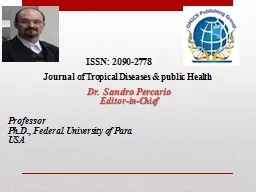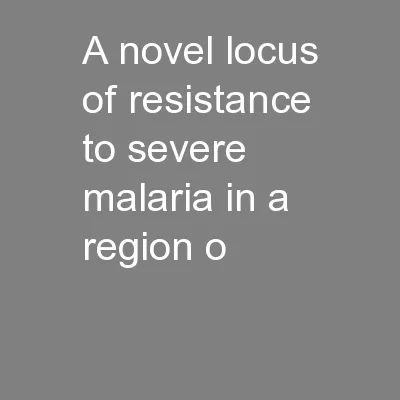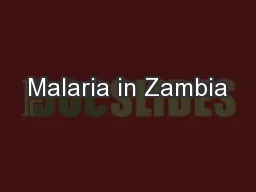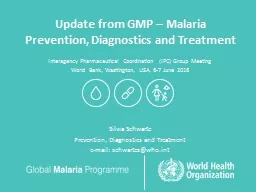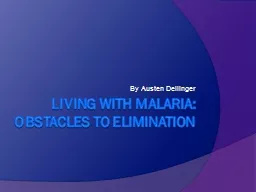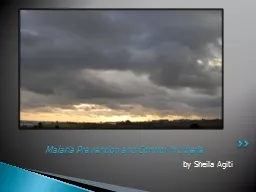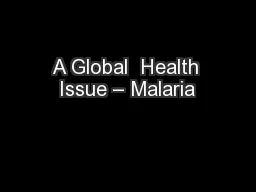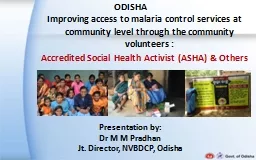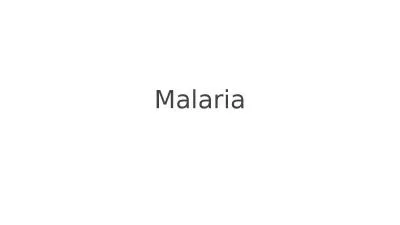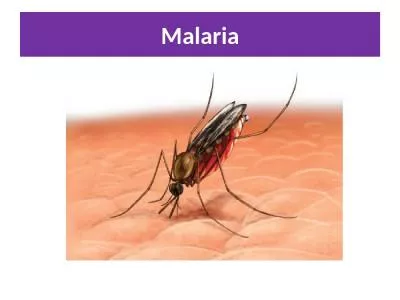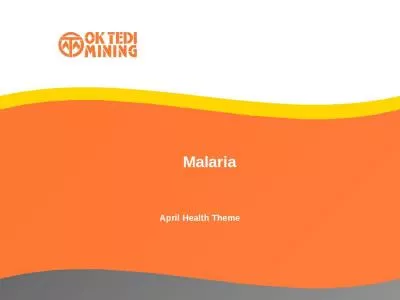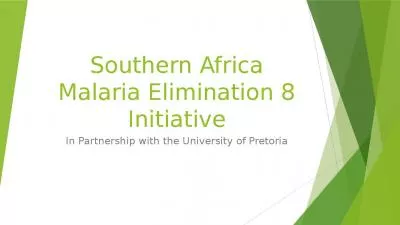PPT-Malaria Control
Author : tatiana-dople | Published Date : 2016-09-09
amp Elimination Dr Sandro Percario Editorial Board Member Professor PhD Federal University of Para Brazil Guest Researcher US Centers for Disease Control and
Presentation Embed Code
Download Presentation
Download Presentation The PPT/PDF document "Malaria Control" is the property of its rightful owner. Permission is granted to download and print the materials on this website for personal, non-commercial use only, and to display it on your personal computer provided you do not modify the materials and that you retain all copyright notices contained in the materials. By downloading content from our website, you accept the terms of this agreement.
Malaria Control: Transcript
Download Rules Of Document
"Malaria Control"The content belongs to its owner. You may download and print it for personal use, without modification, and keep all copyright notices. By downloading, you agree to these terms.
Related Documents

